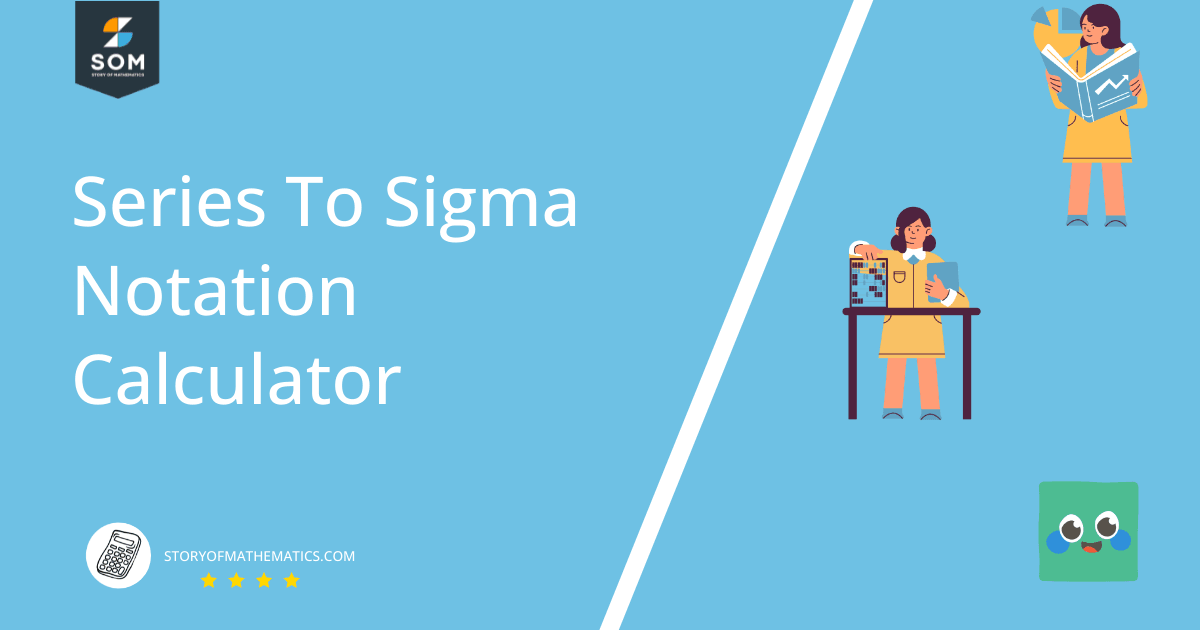JUMP TO TOPIC
Series to Sigma Notation Calculator + Online Solver With Free Steps
The Series to Sigma Notation Calculator evaluates the discrete summation of a given sequence over a specified start and endpoint. You must describe your sequence in terms of a variable – often called the sigma or variable notation of a series. If your sequence is {3, 4, 5, 6, 7}, then its sum (the series) is 3 + 4 + 5 + 6 + 7. The sigma notation for this sequence is n, the corresponding series is $\sum_{n\,=\,3}^{7} n$, and you need to enter n, 3, and 7 in the Sequence, Start Value, and End Value fields, respectively.Similarly, you can describe a sequence like {2, 4, 6, 8} in the sigma notation as 2n for n = 2, 8 respectively for the start and end values. Make sure you follow this input format!If your sequence has multiple variables, the calculator will only evaluate the summation over one of them. For example, if you had $\sum nx$ and input nx to the calculator, then the calculator will find $\sum_{n\,=\,i}^{f} nx$, where i is some starting value and f is some final value.
What Is the Series to Sigma Notation Calculator?
The Series to Sigma Notation Calculator is an online tool that finds the discrete sum of any given series in the sigma notation. It requires the series’ sigma notation and the summation range (start and end point) as input.The calculator interface consists of three text boxes:- Sequence: The sequence itself in sigma notation.
- Start Value: The starting value for the series evaluation.
- End Value: The final value for the series evaluation.
How To Use the Series to Sigma Notation Calculator?
You can use the Series to Sigma Notation Calculator to find the discrete sum of any series over any range of values by providing the series’ sigma notation and the summation range.For example, suppose you want to evaluate the sum of the first 100 natural numbers. We can represent this as an arithmetic sequence with a common difference of 1:A = {1, 2, 3, …, 100}
S = 1 + 2 + 3 + $\cdots$ + 100
Now you can use the calculator to perform the summation S by following the step-by-step guidelines below.Step 1
Convert your provided sequence/series to a variable notation/summation form. Skip this step if you already have the series in this format. For the above example, we can see that the sigma notation would be:\[S = \sum_{n\,=\,1}^{100} n \]Step 2
Enter the sigma notation of the sequence/series in the text box labeled Sequence. For the above example, as per the results from Step 1, enter “n” without quotes.Step 3
Enter the summation’s start value in the text box labeled Start Value. Following the sigma notation for the mock example, enter “1” without quotes.Step 4
Enter the summation’s End Value in the text box labeled End Value. For the example, enter “5” here.Step 5
Press the Submit button to get the results.Results
The results show directly below the calculator’s input fields and contain the summation value. If the series was infinite (start or end value was $\infty$), then there are additional prompts to show the convergence tests and their results.If the calculator determines any given infinite series as divergent, it outputs $\infty$. Otherwise, it outputs the convergence value.For the mock example, the result is:\[ \sum_{n\,=\,1}^{100} n = 5050 \]How Does the Series to Sigma Notation Calculator Work?
The Series to Sigma Notation Calculator works by evaluating the given series using one of several methods such as the closed-form formulae, depending on the series itself.- If the input series is well-known (e.g., arithmetic, geometric, harmonic, etc.), it uses the established closed-form formulae to get the summation result quickly.
- If the series is unknown and involves an infinite sum, it conducts a series of tests to check for convergence. If passed, the calculator employs the zeta function for evaluation. Otherwise, it outputs $\infty$.
- If the series is unknown and involves a finite sum, it calculates the result directly.
Sequences and Series
A sequence is like a set of quantities where each entry is related to the next by some discernible mathematical pattern or relation. For example:Sequence = A = {1, 2, 4, 8, 16}
Here, each element is twice the value of the previous one. Such a sequence is known as a geometric sequence G!G = {a, ar, ar$^\mathsf{2}$, ar$^\mathsf{3}$, …, ar$^\mathsf{n}$}
The main difference between a set and a sequence is that, unlike a set, a sequence has ordered, repeatable values. If the sequence extends to infinity, it becomes an infinite sequence:A = {1, 2, 3, …}
On the other hand, a series is simply the sum of all the sequence elements. That is, if:Sequence: A = {1, 2, 3}
Series: S = 1 + 2 + 3
Solved Examples
Example 1
Consider the following sequence:A = {1, 1/2, 1/3, 1/4, …}
Is the resulting series convergent or divergent? If it is convergent, find the convergence value. If it is divergent, find the sum of the first three entries.